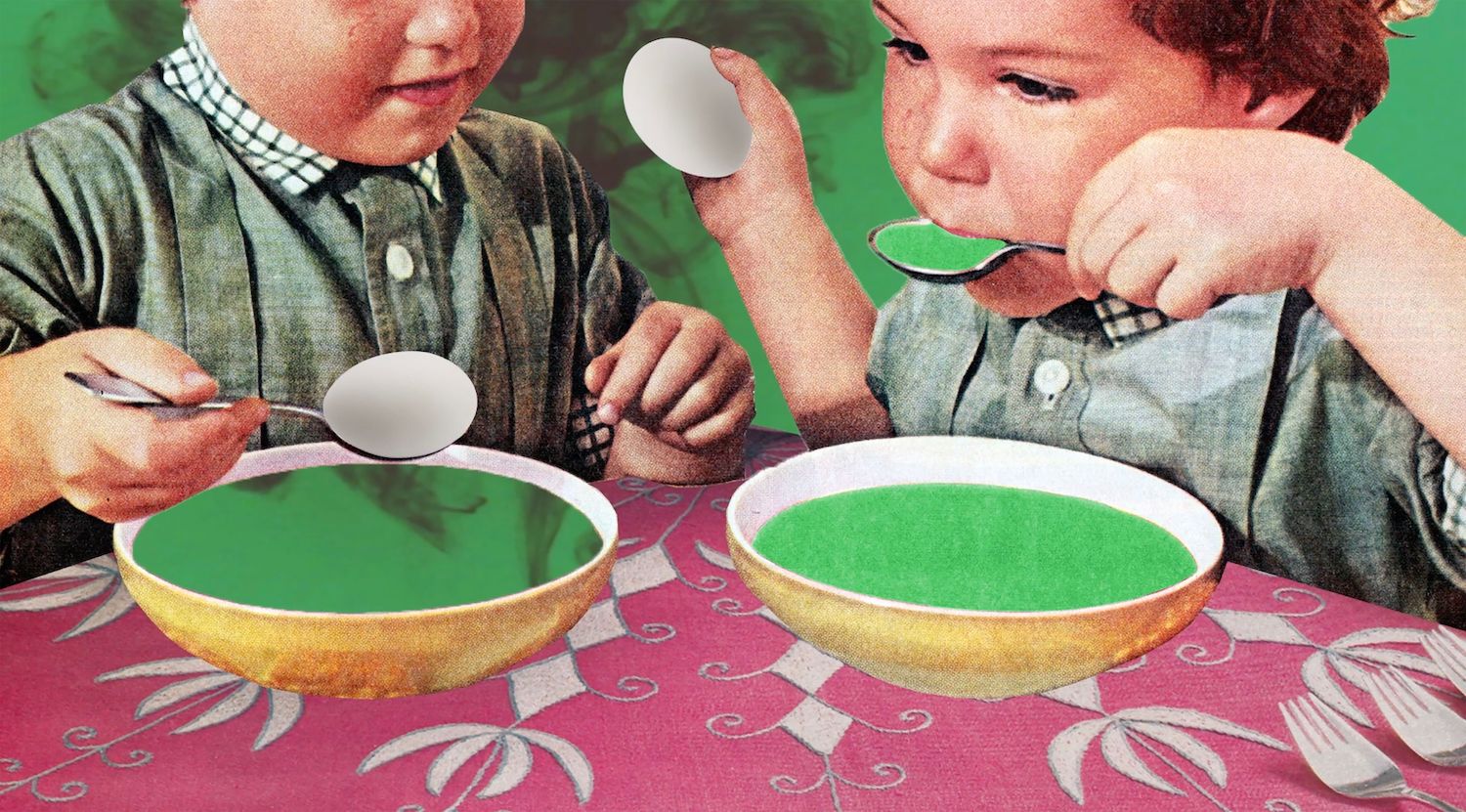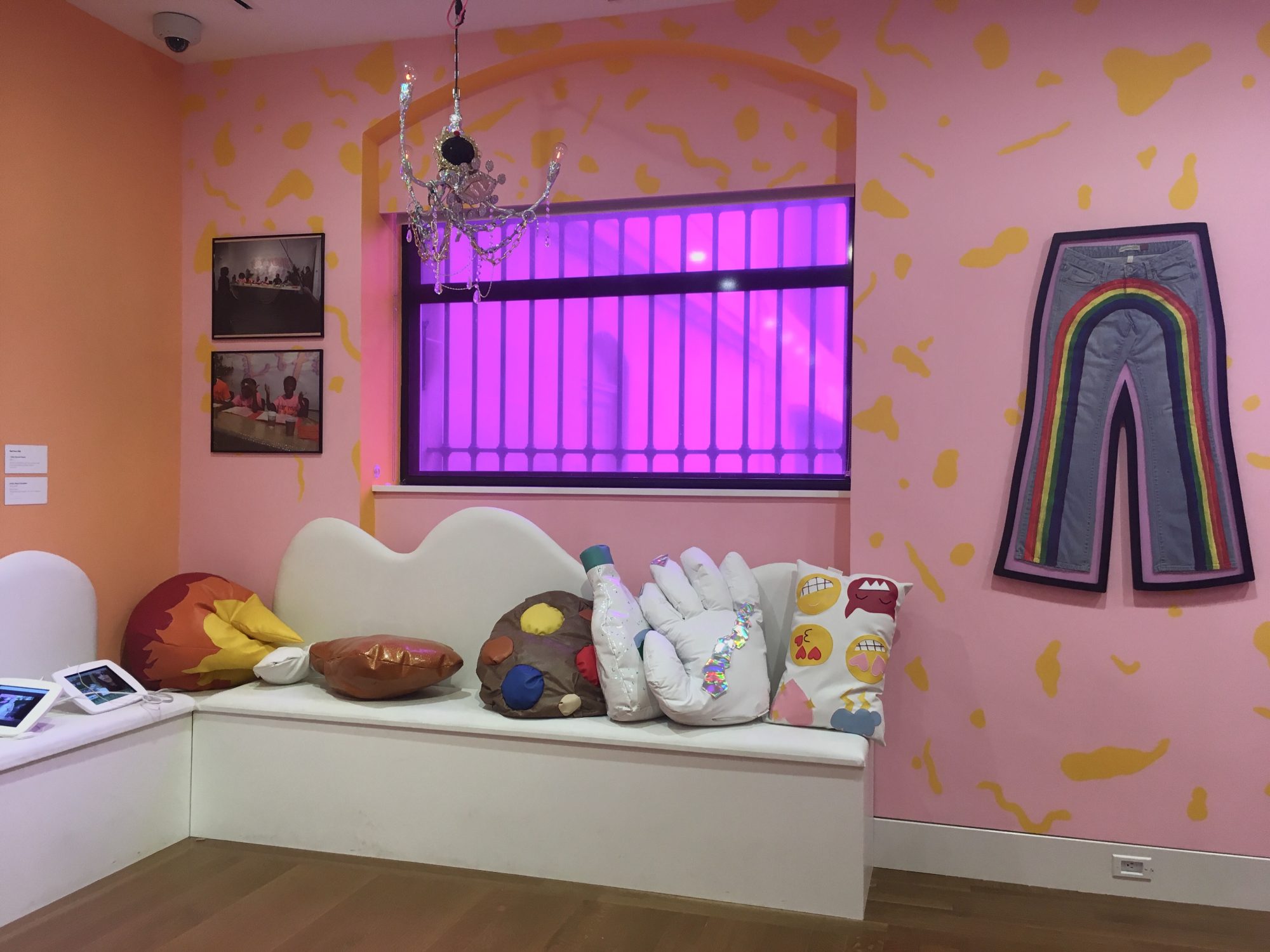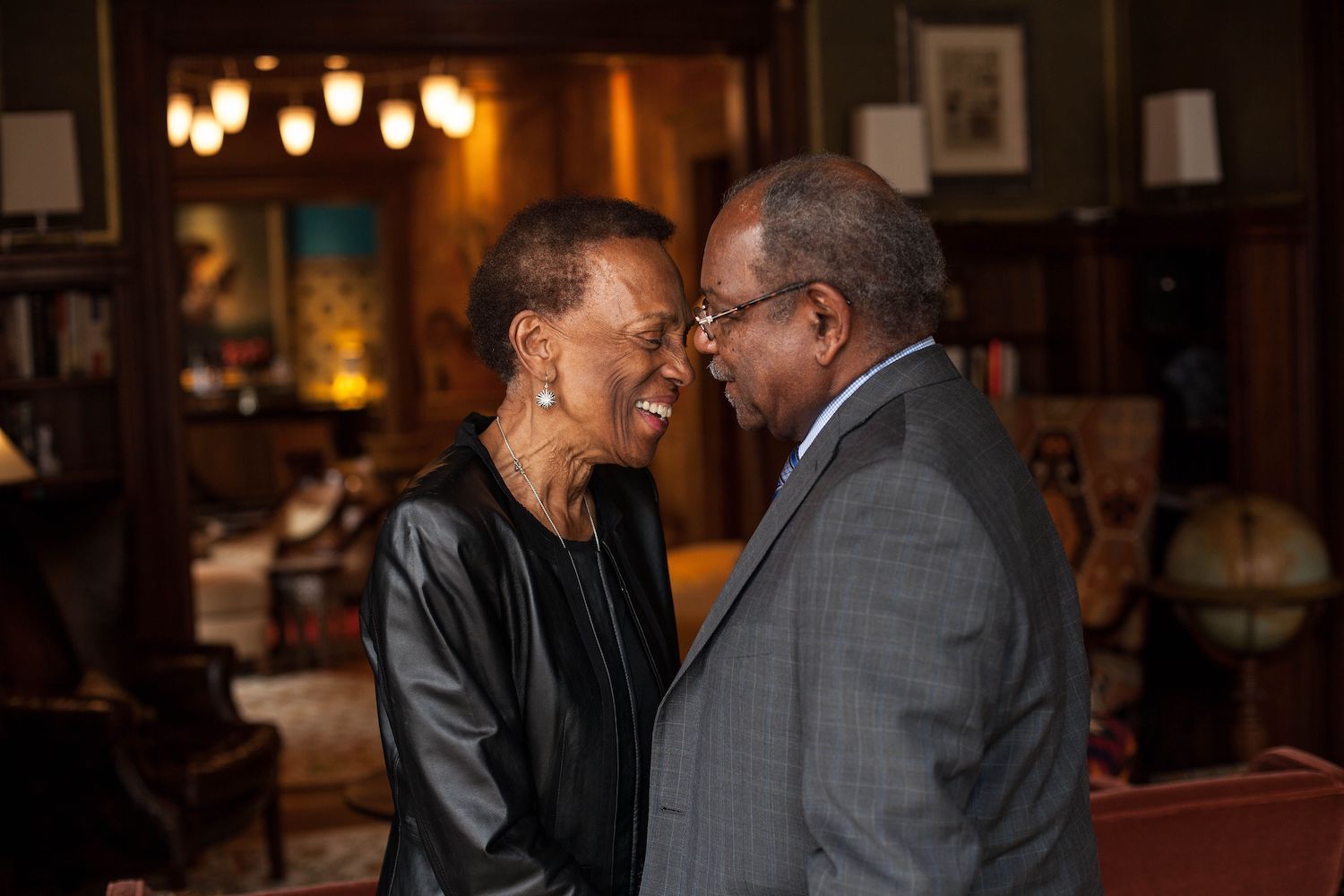An Conversation with Sylvia and Eddie Brown, the Baltimore Philanthropists and Art Collectors who funded the BMA’s New Endowed Chief Curator Position by Cara Ober with photos by Kelvin Bulluck
On February 8, The Baltimore Museum of Art announced a gift of $3.5 million from Baltimore-based philanthropists Eddie C. and C. Sylvia Brown, the major funders of MICA’s Brown Center, to endow the position of chief curator at the museum. According to the BMA’s press release, the Eddie C. and C. Sylvia Brown Chief Curator position is “one of the few curatorial positions in the United States named for an African American couple” and follows the August 2018 chief curatorial appointment of Dr. Asma Naeem, a specialist in American and contemporary Islamic art, formerly the associate curator of prints, drawings, and media arts at the Smithsonian’s National Portrait Gallery. Naeem earned a PhD at the University of Maryland and her undergraduate degree at Johns Hopkins University.
“We see this endowment for chief curator as being a very significant statement, especially naming a person of color,” Mr. Brown, the founder and chief executive of Brown Capital Management, said to The New York Times, published about the same time the BMA issued its press release.
Although the BMA headlines are attention-grabbing, the Brown’s current gift is just one of many contributions to Baltimore’s art and culture, including MICA’s Brown Center, the BSO’s OrchKids program with Marin Alsop, the Enoch Pratt Library, JHU’s Bloomberg School of Public Health, and the purchase and donation of significant historic works by African American artists to area museums, including The Walters and the BMA.
Originally published in the BmoreArt Journal Issue 02 in 2016, this in-depth interview with the Browns offers a deeper look at the individuals who have funded the BMA’s new endowed chief curator position and highlights their decades of philanthropic support for the arts in Baltimore.
 Interviewing Eddie and Sylvia Brown at The Ivy Hotel in 2016
Interviewing Eddie and Sylvia Brown at The Ivy Hotel in 2016
Eddie and Sylvia Brown met in college at Howard University, where he studied engineering and she studied physical and health education. They both cite Howard as the place where they began to develop an appreciation for the power of education and art in changing lives. After settling in Baltimore, Eddie founded Brown Capital Management, an investment firm that grew to be so financially successful that the couple has been able to build MICA’s Brown Center, give million dollar challenge grants to area cultural institutions, fund a fellowship program at JHU’s Bloomberg School of Public Health, and collect internationally significant works by African American artists.
One of their more recent projects is The Ivy, a historic boutique hotel and restaurant in Mt. Vernon renovated from buildings so dilapidated that when the copious ivy vines were pulled down, the walls came down with them. The couple agreed to meet for a conversation about art philanthropy and collecting at the hotel, located across from Brown Capital Management on Biddle Street. The following conversation has been edited for clarity.
Sylvia Brown: The first piece of art we ever bought together was in Philadelphia, at a small gallery that concentrated on African American artists. We didn’t know anything about art back then. We just knew what we liked.
Eddie Brown: Our niece was living there, and she told us about this gallery and invited us to take a look. We ended up buying several prints in limited editions. We still have them hanging up in our house.
SB: We did it without much knowledge about art, but those were our first… One pictured these two little girls holding flowers in their hands. There’s another on of a musician, he’s playing a bass in a nightclub and you can’t see his face but he’s really into the instrument.
EB: Another early one was of a farmer with his plow. It reminded me of my dad. I used to walk behind a mule, plowing a field when I was a kid. That one is still in our study.
SB: We felt an emotional connection to them. We were not thinking about how much they would be worth later on. Who knows? They might be worth less now, but we liked those pieces.
EB: Our daughter is a painter. She went to Hoffberger for her Master’s Degree. She has been a big influence on us and has helped to shape our collection and refine our taste over the years.
SB: She was the first person who told us there was no such thing as African American Art. Did you know that? It’s art by African Americans, but most people say African American Art.
EB: We consult with her and we also have three other trusted advisors we have worked with, as we matured in our taste. One is probably the best-known expert on African American artists, David Driscoll. David was willing to chat with us and he suggested working with the researcher who helped to put together the Cosby Collection, Steven Jones. For the past fifteen years he has been helping us.
SB: One of our favorites is a painting by Henry Ossawa Tanner. It’s a portrait of his father who was a Bishop in Maryland. It’s very striking – we own it with the BMA. They use it on display when they need it and we have it in our home sometimes and then it travels to different locations for exhibitions.

EB: That one is special because it’s the only known painting of his father that exists. Tanner’s grandniece owned it and was interested in selling, but only for public display to a major museum. They wanted it to be in Baltimore because of the family roots. It was painted in 1897, so the Walters was the logical place for it. Steven went to the Walters on her behalf and they said they didn’t have the money for it. So they went to the BMA and Doreen Bolger, the Director, asked if she could keep it for a few days.
SB: Doreen called me and said, “I understand you would like to own a Tanner but haven’t been able to find it. Can you and Eddie come over to my office?” So after work, we did that. We sat on the couch in her office and the piece was displayed on an easel. It was exquisite.
EB: She said, “Do you like this one?” And we said yes. And she said, “So do we. I have an idea… What if we formed a partnership?” I asked her if it meant we were 50/50 partners on the sale and she laughed. They asked us to pay for it, to own it, but to loan it to them for approximately six months a year. The piece is a promised gift to the BMA after we die.
SB: We have loaned it out to a number of different institutions, which helps us to keep collecting beyond the wall space we have.
EB: Collecting gets to be kind of a hunt, a challenge. The other person of our team who has helped with our collection is Jackie Copeland, formerly at the Walters. She has helped to build our knowledge and, with Steven, has assessed how our collection stacks up with the best in the country.
SB: For me, collecting art is more about what we like. It’s not competitive and I don’t care what other people have. But we are interested in filling in the gaps, and that’s quite different than comparing our collection to what other people have.
EB: Over the years we have collected emerging artists, mid-career, and established masters… although, the emerging artists are now mostly established.
SB: I love sculpture. We have a few pieces by Elizabeth Catlett that are among my favorites. And also works by Martin Puryear. His wooden sculptures are wonderful. And then the one that we just got, a Horace Pippin, that painting is another favorite.

EB: Another sculpture that we love in our collection is by Edmonia Lewis. We have the largest piece of marble sculpture that she ever made. It’s five feet tall and is titled “Rebecca at the Well.”
A funny story, well maybe not so funny… We gave a challenge grant to the BMA many years ago, to add to their collection of African American artists. The Walters found out about it, so they approached us and wanted to do a similar thing. One of the first pieces they got was a small Edmonia Lewis bust. The Baltimore Sun wrote about their purchase and the article said it was the first work of art the Walters bought by an African American artist–ever. And we thought the writer had made a mistake! We couldn’t believe it.
SB: Because of discrimination and the underappreciation of her work, Lewis actually left the country and went to England. We feel strongly that this work should be recognized, that it benefits us as a city and a country. We came from very humble beginnings and it’s so important to give back. My husband got his undergraduate education because somebody he didn’t know paid for it. I had parents who were teachers and they believed in it.
EB: A former pastor of ours in Baltimore captured this. He said, “those who are blessed should be a blessing to someone else, especially someone less fortunate.” We hopefully have ingrained this idea; we certainly have tried with our daughters and our grandchildren.
Its not really giving back, it’s giving forward. The most important thing is that you give. Our daughters both have said their only regret is that we don’t have more to give.
SB: At our foundation meetings, the requests are so numerous – it’s a big challenge. What we do is set different areas to give: our foundation focuses on art, education, and health. Art is a very important component in education, as well. I’m on the Arts Every Day board, and their mission is to make sure art is a part of every class at school. Art is fulfilling, whether you appreciate it or you do it. This city has so much art.
We broadened our support not just to visual arts, but also give challenge grants to the performing arts. Most recently we’ve been working with OrchKids, a program that Marin Alsop started in elementary schools in Baltimore to teach kids to play instruments. It’s fantastic.

EB: We are also seeking to improve healthcare outcomes in depressed communities, but we do it by leveraging and challenge grants specifically to the African American community.
We talked to our daughters and asked them if they realized that that this giving is decreasing their inheritance they said, “So what? That’s okay with us. We have enough. We’ll have enough.” That was the right answer, the right attitude.
You can only buy so much stuff. There’s a point where you have adequate living expenses covered, travel, basically to do all the conveniences one would want to do. How much more do you really need?
SB: Giving is healthy. It makes you feel good. My brother says, “When you give, think of all that you get in return, the benefits of giving.” And maybe I won’t know them all in my lifetime, but it’s a good feeling when you can help.
EB: We’ve both been on various boards and it was Tom Wilcox [of the Baltimore Community Foundation] who came up with this idea of leveraging your dollars through challenge grants. And I wanted to specifically do it with our community, the African American community. We as a people are very capable. We give as a people to our churches but many of us don’t go to the next step for various reasons. Nearly every grant we’ve given has had a component of giving back from our community. It started with the Enoch Pratt Library, and it was not easy. It took them years. But they finally did it.
SB: It’s not easy. But easy is overrated.
Photos: Kelvin Bulluck for the BmoreArt Journal of Art + Ideas: Issue 02






